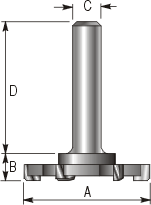Jennifer,
In addition to your hand plane a reliable straight edge, a pair of winding sticks and a marking guage will be useful.
Use the longest plane you can find and, as previously pointed out lay the board on your bench whichever way up makes it most stable. I would tend to just begin planing which will naturally hit the high spots first with a long plane tending not to follow the contours of the wood, the main things to be aware of at this stage is that even a long plane will follow a convex curve so use the straight edge to check for that (the edge of a decent plane makes a useful quick straight edge) and also check for winding. Deal with any convexity (is that a real word?) and winding first by hitting the high spots.
Keep checking with straight edge and winding sticks (use the straight edge along the length at varoius points, across the width at various points and along the diagonals).
When you're happy with one face set your marking guage and scribe off the thickness all round the board, flip it and plane to the line.
Alternatively remove the bulk of the waste by 'skiing' it off with a router. Make an MDF box into which the board is mounted with the box edges standing higher than the board. Screw a board to the base of a big router and (ideally using a surface trim cutter but a 2 flute straight cutter will do) run the router across the board with the board screwed to its base running against the top of the box. Check out Ron Fox's tips on the Wealden Tools website.
Alternatively, find a friendly workshop nearby and come to an arrangement over using their machines. I just spent an hour or so at a local factory using their wide belt sander which cost significantly more than the entire contents of my workshop and acieved a finish that would have taken me days to create. The boards I was sanding were 2' wide so I would have had to cut them up, thickness them, joint them and then hand plane them or hand plane them from scratch. A small financial investment in machine time occasionally helps me to keep my costs more sensible.
Too much waffle?
Cheers
Steve


































